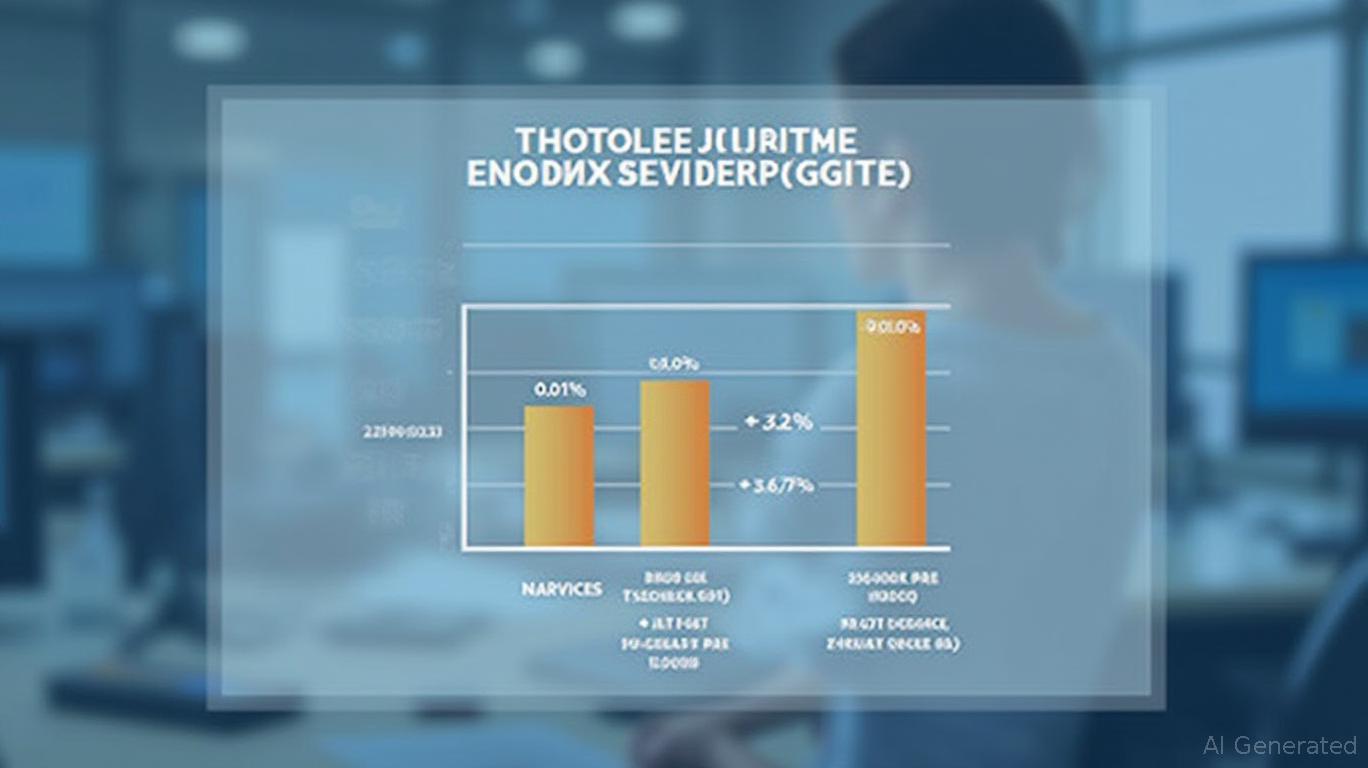AInvest Newsletter
Daily stocks & crypto headlines, free to your inbox
The latest U.S. Producer Price Index (PPI) for May 2025 reveals a nuanced inflation landscape, with modest producer-level price increases masking significant volatility across sectors. The 0.1% seasonally adjusted rise in final demand PPI, following three consecutive monthly declines, underscores the Fed's challenge in navigating an economy where services stabilize while energy and raw materials remain volatile. This report offers critical clues about the path of monetary policy and equity market direction.
The May PPI increase was driven by final demand services (+0.1%) and goods (+0.2%). Services, particularly trade and logistics (e.g., machinery wholesaling +2.9%), showed resilience, while energy and unprocessed goods faltered. Natural gas prices plummeted 18.7% year-on-year, dragging down unprocessed goods by 1.6%. Meanwhile, processed nonferrous metals surged 4.6%, reflecting supply-chain dynamics in manufacturing.

The divergence between services (which feed into core inflation) and energy (a wildcard) complicates the Fed's outlook. While core PPI (excluding food and energy) rose 2.7% annually, the collapse in natural gas and jet fuel prices highlights energy's destabilizing role. This creates a “Goldilocks gap”: services stabilize, but energy's swings could delay the Fed's pivot to rate cuts.
Intermediate demand metrics, which track input costs across production stages, reveal further fragmentation. Stage 4 (finished goods) rose 2.4% annually—its highest since 2023—while Stage 2 (processed materials) fell 0.6% for a fourth straight month. The decline in Stage 2, driven by carbon steel scrap (-7.9%) and jet fuel (-3.5%), signals weakening manufacturing inputs.
This mismatch suggests manufacturers are absorbing cost declines but face uneven demand. Equities in industrials and materials sectors may struggle unless Stage 2 recovers, while Stage 4's strength could benefit logistics and real estate firms (e.g., property management services up 0.1%).
The May PPI reinforces the Fed's “wait-and-see” stance. Core inflation pressures are moderating, but the central bank will likely avoid cuts until energy volatility subsides and wage growth (a services-driven metric) shows clear deceleration. Fed funds futures now price in a 52% chance of a July hike, down from 65% last month—a reflection of PPI's mixed signals.
For investors, the takeaway is clear: equities will remain tied to the Fed's next move. A pause in July could spark a rally in rate-sensitive sectors like tech (e.g., NVIDIA) and real estate (e.g., Prologis). However, persistent energy declines or a Stage 2 collapse could reignite recession fears, favoring defensive plays like utilities (NextEra Energy) or gold (SPDR Gold Shares).
The May PPI report is a reminder that inflation's battlefronts are shifting—not vanquished. While services stabilize, energy's swings and manufacturing's fragility keep the Fed on edge. Investors should prioritize sectors insulated from volatility, such as services and logistics, while hedging against energy's unpredictability. The Fed's next move hinges on whether this “Goldilocks gap” narrows—or widens.
For now, the data suggests patience. The Fed holds the keys, but equities will follow the PPI's lead.
Delivering real-time insights and analysis on emerging financial trends and market movements.

Dec.22 2025

Dec.22 2025

Dec.22 2025

Dec.22 2025

Dec.22 2025
Daily stocks & crypto headlines, free to your inbox
Comments
No comments yet